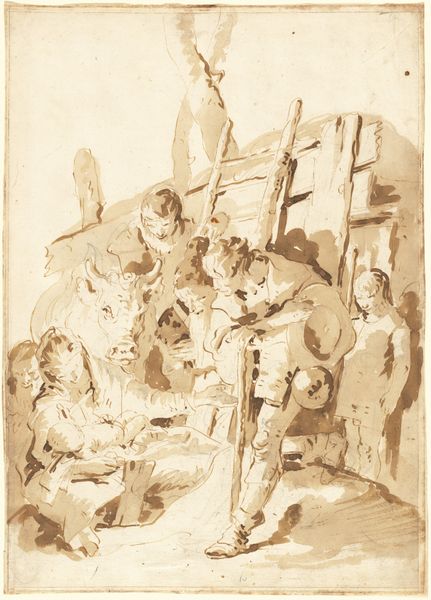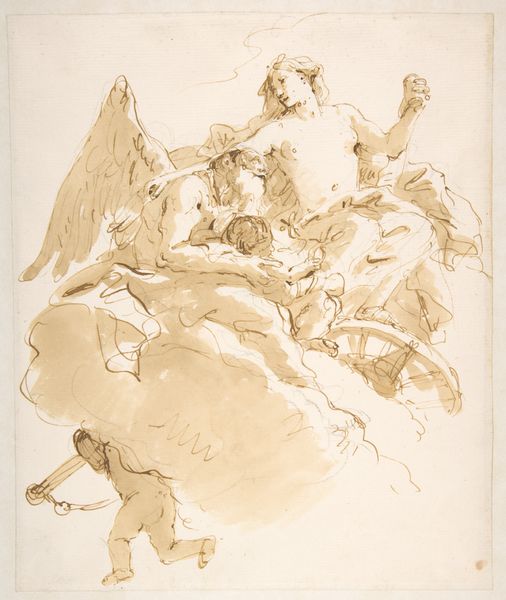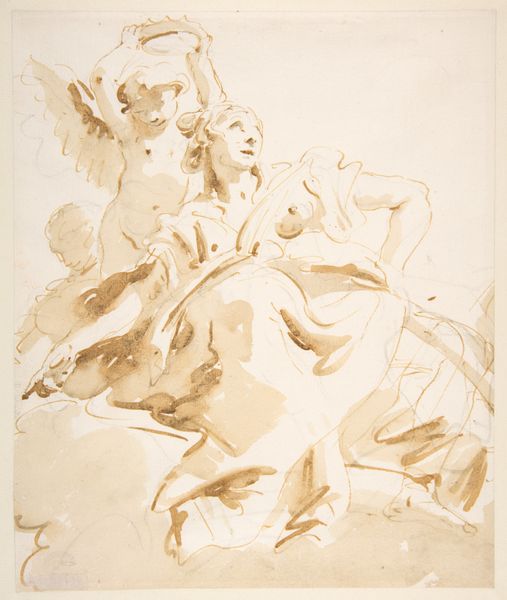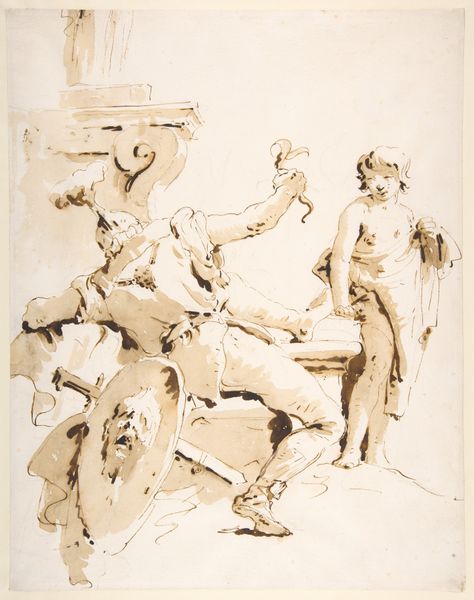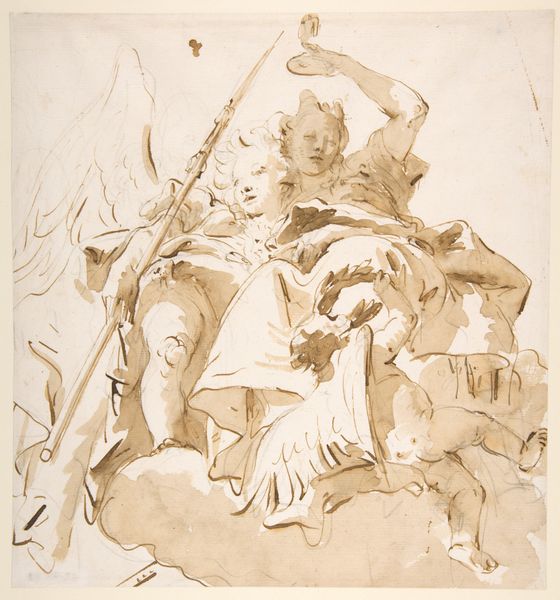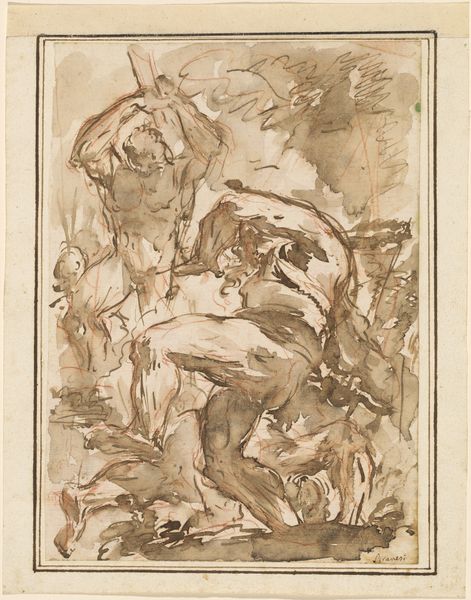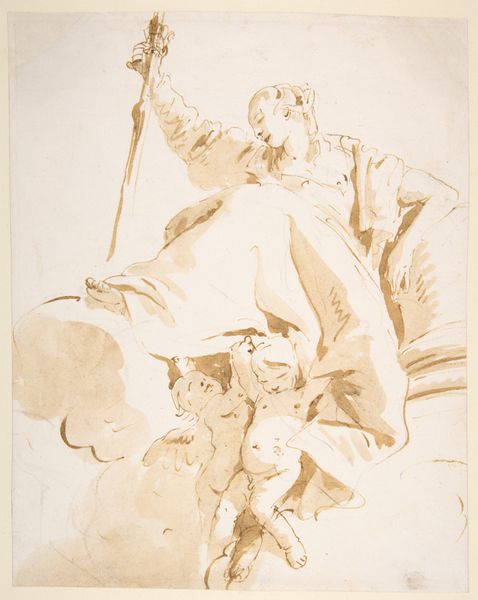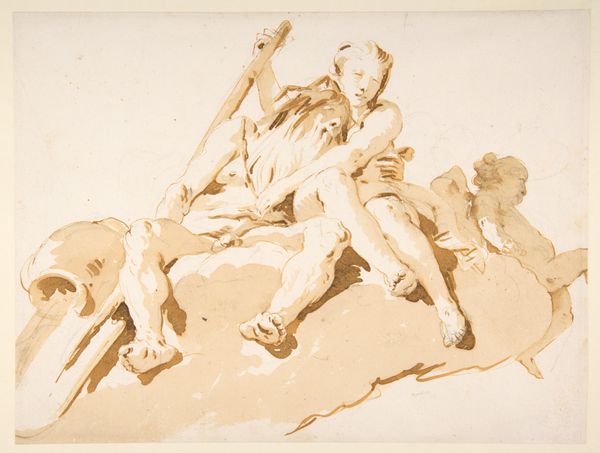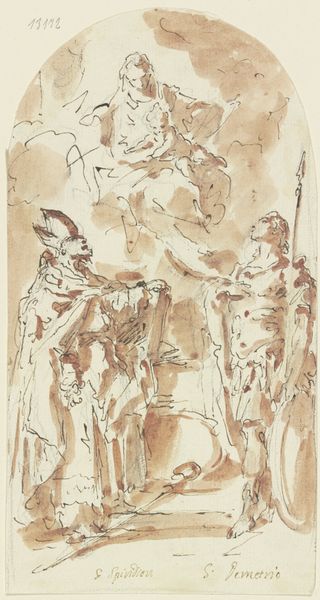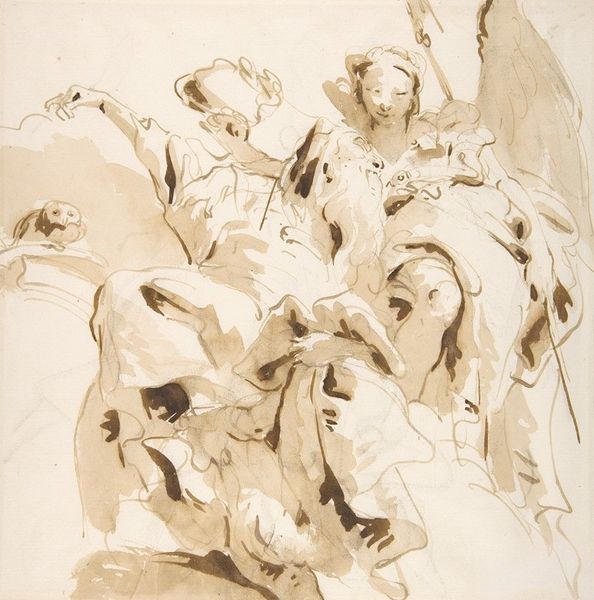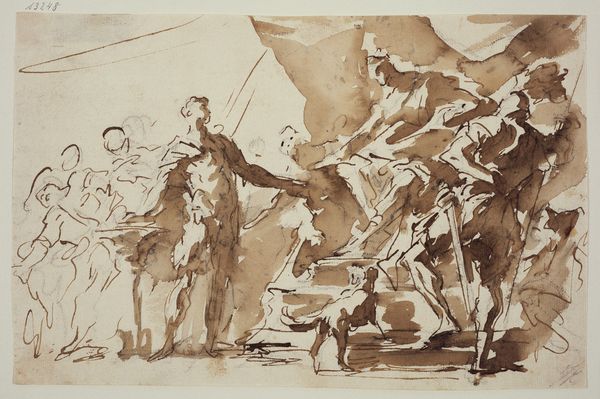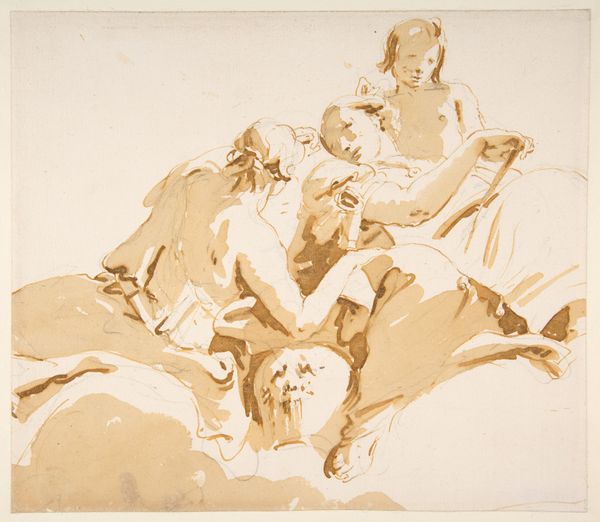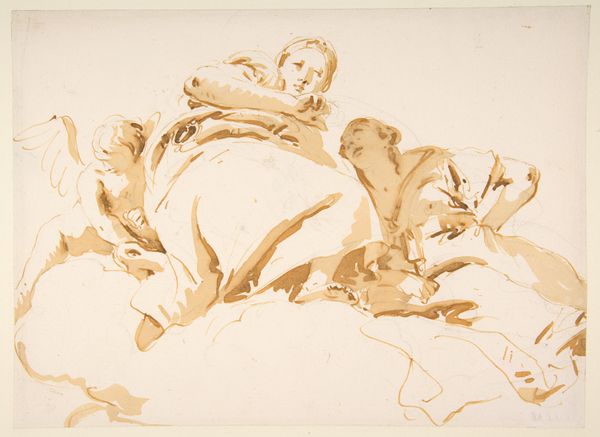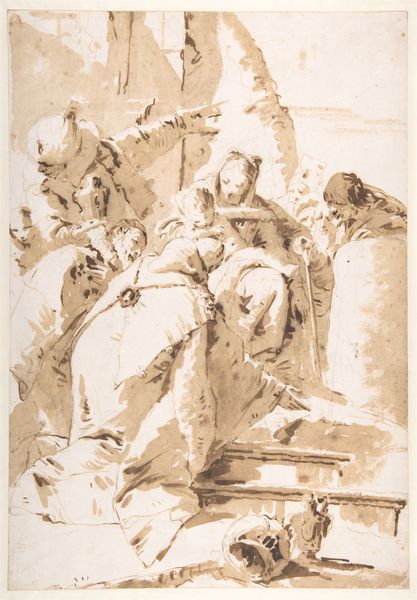
Scherzo di Fantasia: Standing Warrior and King with Five Attendants 1696 - 1770
0:00
0:00
drawing, print, paper, watercolor, ink
#
drawing
#
allegory
#
baroque
#
ink painting
# print
#
figuration
#
paper
#
oil painting
#
watercolor
#
ink
#
soldier
#
watercolour bleed
#
watercolour illustration
#
history-painting
#
nude
#
watercolor
Dimensions: 13-7/8 x 10-15/16 in. (35.2 x 27.8 cm)
Copyright: Public Domain
Editor: So this is Giovanni Battista Tiepolo’s "Scherzo di Fantasia: Standing Warrior and King with Five Attendants," dating from about 1696 to 1770. It’s a drawing done with ink, watercolor, and paper. It has this dreamlike quality to it, and I'm immediately struck by how loosely it's rendered, like he's capturing a fleeting idea. What can you tell me about it? Curator: Consider the materials: ink and watercolor on paper. These are relatively inexpensive, easily transportable materials, suggesting a preparatory sketch or a study, not necessarily a finished 'masterpiece'. It reflects the practicalities of the artist’s labor. Who was he producing this work for, and what impact did this have on his choice of media? Editor: I see your point. It definitely shifts my perspective knowing it might've been preliminary work. The way it was commissioned must have changed its value or significance somehow... how it's more about work than... pure art? Curator: Precisely. Think about the consumption of art in Tiepolo’s time. Was this meant for a wealthy patron’s private collection, or to be reproduced as a print for a wider audience? This affects its status as commodity, impacting not only its worth, but Tiepolo's status, his visibility, his labour... Editor: So, it's less about the allegorical narrative and more about the means of production and distribution? Did the rise of printmaking democratize art, even just a little? Curator: Exactly. Consider the socio-economic context in which these prints circulated. The division of labor, the access to materials... all shaped Tiepolo's production. By studying this sketch, can we unpack a new interpretation for what stories the piece has to offer beyond what meets the eye? Editor: I never considered how much the *making* of the art, like materials and reproduction, change how we understand art and stories it has to tell. Curator: And by examining that production, the relationship with the artist also shift towards more of a...worker creating the commodity and participating in social activities rather than this genius that comes from nowhere... which provides very interesting narratives, don't you think?
Comments
No comments
Be the first to comment and join the conversation on the ultimate creative platform.
